Tenant letter of recommendation template
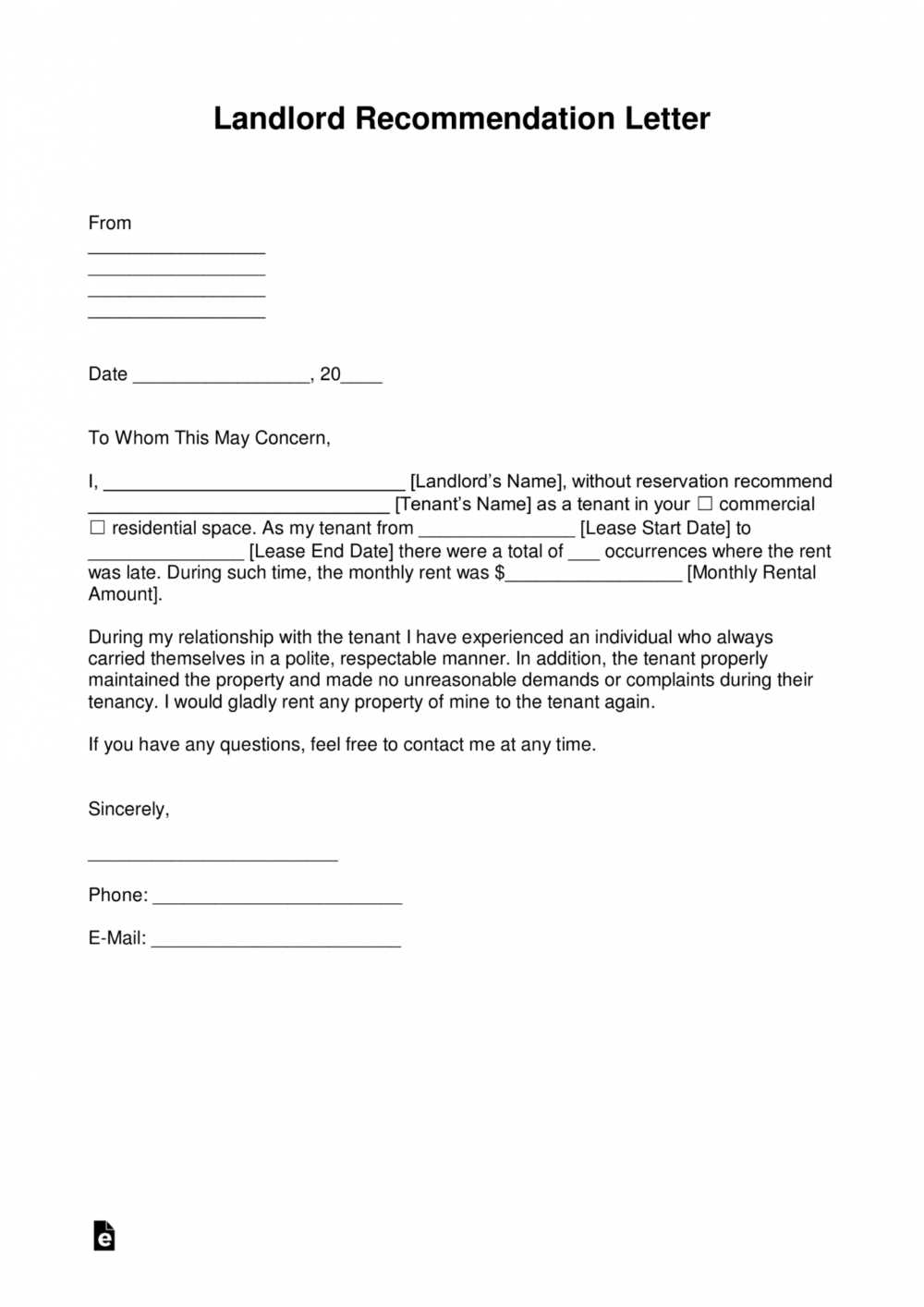
When writing a tenant recommendation letter, be clear and concise. Start by confirming the tenant’s full name, the length of their tenancy, and the property they rented. Highlight their reliability, such as consistently paying rent on time or taking good care of the property. These details help landlords assess the tenant’s suitability for future rentals.
Next, focus on the tenant’s behavior. Did they follow the rental agreement and maintain a positive relationship with neighbors? If they kept the property in excellent condition and addressed minor issues, mention this as an indicator of their responsibility and respect for the living space.
End the letter with a straightforward recommendation. If you would rent to this individual again or recommend them to other landlords, express this clearly. A direct, confident endorsement based on their proven track record will be valuable to anyone considering the tenant for future rental opportunities.
- Key Elements of a Tenant Recommendation Letter
A well-written tenant recommendation letter should begin with clear identification of the tenant’s name and the length of the tenancy. Specify the type of property the tenant rented, such as an apartment, house, or commercial space. Provide a brief overview of your relationship with the tenant, emphasizing their positive traits without overgeneralizing.
Focus on the tenant’s reliability. Mention whether they paid rent on time, maintained the property, and respected the terms of the lease. If the tenant communicated well and addressed any concerns promptly, include these details to illustrate their accountability.
Discuss the tenant’s conduct in the neighborhood or building. Did they interact respectfully with neighbors or fellow tenants? Include specific examples that reflect their courteousness and responsibility, especially when it comes to shared spaces or noise levels.
If the tenant’s lifestyle aligns with the property’s standards, mention that as well. For instance, if they took good care of the lawn or kept the living area tidy, highlight these aspects as proof of their attention to detail and cleanliness.
Conclude with a recommendation. State if you would consider renting to the tenant again or if you believe they would be an asset to another landlord. Be honest, as your credibility relies on providing accurate and balanced information.
Structure the letter into clear sections: introduction, body, and closing. Begin with a concise introduction that immediately states the purpose of the letter. Mention how long you’ve known the tenant and in what capacity.
In the body, provide specific details about the tenant’s qualities, such as their reliability in paying rent, how they maintain the property, and their interaction with neighbors. Use examples to back up your claims. Avoid vague descriptions, focusing instead on concrete behaviors or actions that highlight their positive traits.
Conclude by summarizing the tenant’s strengths and stating your strong recommendation for their future rental application. End with a polite offer to provide further details if needed.
Keep the tone formal yet approachable, and ensure the letter is free from errors. Use clear paragraphs, and make sure each section flows logically to the next.
Providing a tenant reference involves more than just listing basic facts. Avoiding common mistakes ensures your reference is helpful and accurate.
- Vague Descriptions: Avoid using ambiguous language that doesn’t provide concrete information about the tenant’s behavior or reliability. Instead, include specific examples of their payment history, cleanliness, and cooperation with neighbors.
- Over-Exaggeration: Be honest and accurate. Don’t inflate the tenant’s qualities to make them seem better than they are. Exaggerations can lead to mistrust and may backfire if the tenant’s actions don’t match the description.
- Failing to Mention Negative Aspects: If there were issues such as late payments or property damage, mention them, but do so objectively. Avoid focusing on one-off incidents unless they were significant or repetitive.
- Omitting Relevant Information: Failing to include important details, such as the length of tenancy or how the tenant handled responsibilities, can leave a reference incomplete. Include all relevant aspects to provide a complete picture.
- Being Too Brief: Short and generic references provide little value. Include enough detail to give a prospective landlord a clear understanding of the tenant’s history and habits.
- Unclear Contact Information: Always ensure your contact details are accurate and easy to find. A landlord may want to reach you for follow-up questions.
- Ignoring Confidentiality: Respect privacy. Do not include personal or irrelevant details about the tenant that are unrelated to their rental history or suitability as a tenant.
Focus on the specific qualities that make the tenant a great fit for the new rental. Highlight punctuality with payments, respect for the property, and communication skills. Personalize the letter to reflect their individual strengths, rather than using generic compliments.
Addressing the Landlord’s Expectations
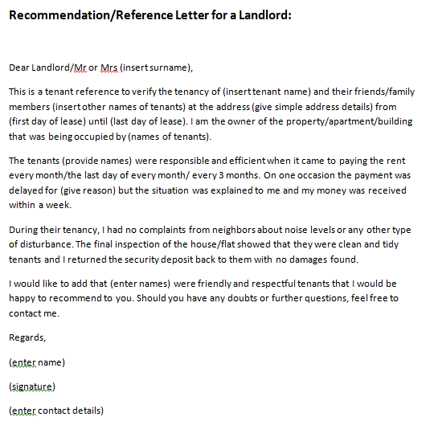
Tailor the letter by understanding what the potential landlord values most. If they prioritize reliability, mention how the tenant consistently met deadlines. If the focus is on property care, share examples of how the tenant maintained the property during their tenancy.
Specific Examples
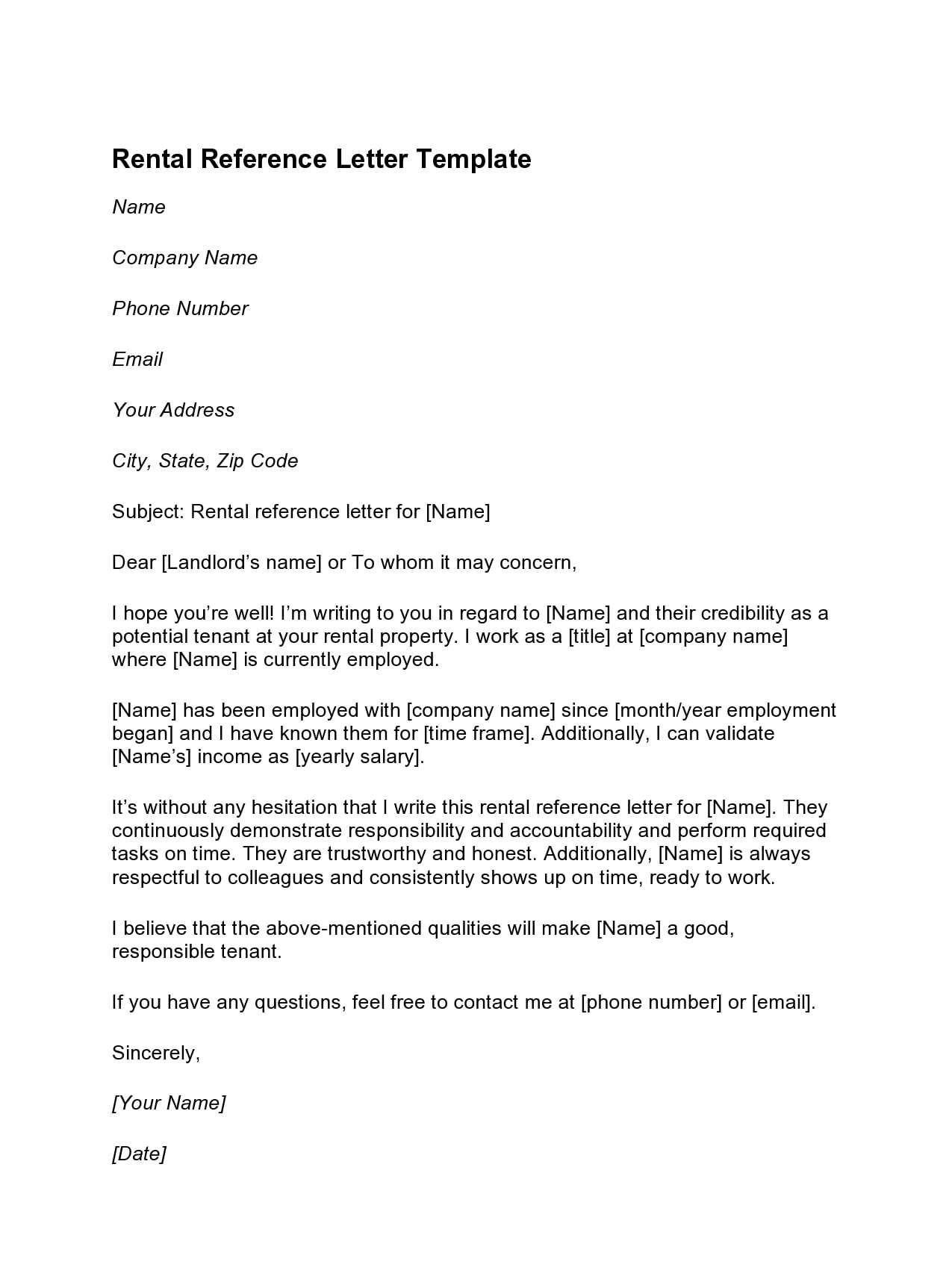
Give concrete instances that demonstrate the tenant’s positive traits. For example, you might mention how they promptly reported maintenance issues or how they helped resolve a neighbor’s concern. These examples give credibility to the recommendation and make it more persuasive.
By focusing on these details, you provide a strong and personalized recommendation that stands out to landlords. Avoid using broad statements that don’t paint a full picture of the tenant’s character and reliability.
The tone of a tenant letter of recommendation should be positive, clear, and respectful. Maintain a professional yet approachable manner, showcasing the tenant’s strengths and reliability without overstatement. Avoid overly formal language or excessive praise, as this may come across as insincere. Instead, focus on providing specific examples of the tenant’s responsible behavior and how they contributed to a well-maintained living environment.
Maintain a Positive but Neutral Tone
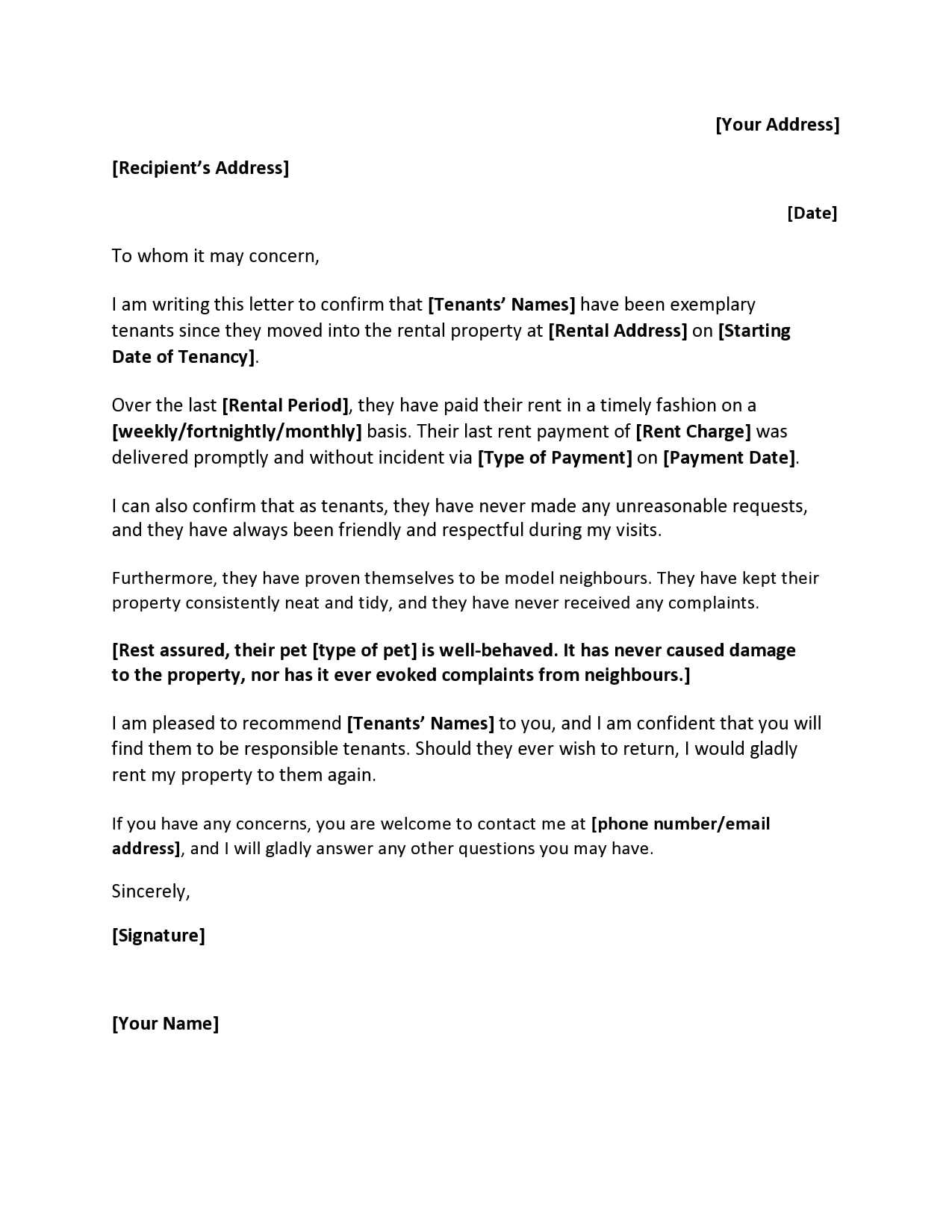
The letter should convey trust in the tenant’s abilities while avoiding overly emotional or subjective statements. A balanced tone creates credibility and allows the landlord or property manager to trust the recommendation.
Be Specific and Concise
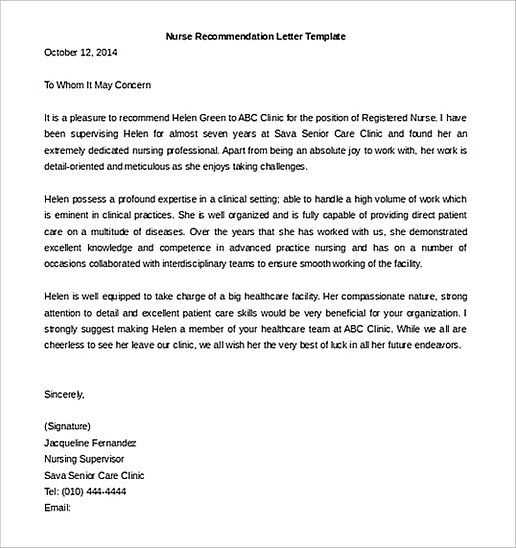
Use clear and straightforward language. Include particular examples of the tenant’s punctuality with rent payments, respect for property, and overall responsibility. Avoid vague terms such as “good” or “excellent” without any supporting details. This will strengthen the letter’s impact and make it more valuable to the recipient.
- Describe the tenant’s payment history, mentioning punctuality and consistency.
- Highlight any instances where the tenant demonstrated care for the property.
- Share how the tenant interacted with neighbors or maintained good relations with others.
Send the reference letter as soon as the tenant requests it or when you are contacted by a potential landlord or property manager. Timing is key in providing them with a smooth, efficient process. Ideally, you should send the letter well in advance of any deadlines set by the new landlord, allowing them enough time to review the document.
How to Send the Reference
The reference can be sent via email or traditional mail, depending on the recipient’s preferences. Email offers a faster and more convenient way to deliver the letter. If mailing a hard copy, ensure it is printed on official letterhead for added authenticity. Always confirm the preferred method of delivery with the recipient.
Key Considerations for Sending
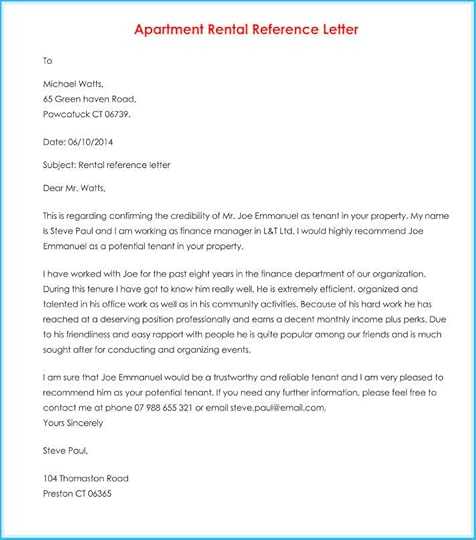
Make sure you include all relevant details and make the letter easily accessible. Double-check the contact information, and ensure that the reference letter is formatted properly for readability. If sending by email, include a brief, polite message in the body of the email, explaining that the letter is attached for their consideration.
| Method | Pros | Cons |
|---|---|---|
| Fast, easy, convenient | Less personal, may end up in spam | |
| Traditional Mail | More formal, personal touch | Slower, potential delays |
Now repetitive words are used less often, but the meaning is preserved.
When writing a tenant recommendation letter, clarity and conciseness matter. Avoid unnecessary repetitions while maintaining a clear message. Focus on using varied vocabulary to keep the letter engaging and professional. If you’ve already described the tenant as responsible, there’s no need to repeat that multiple times. Instead, provide examples of actions that demonstrate this trait, such as timely rent payments or well-maintained property. These specific details help reinforce your point without redundancy. Keeping the language fresh allows you to convey all the necessary information effectively.